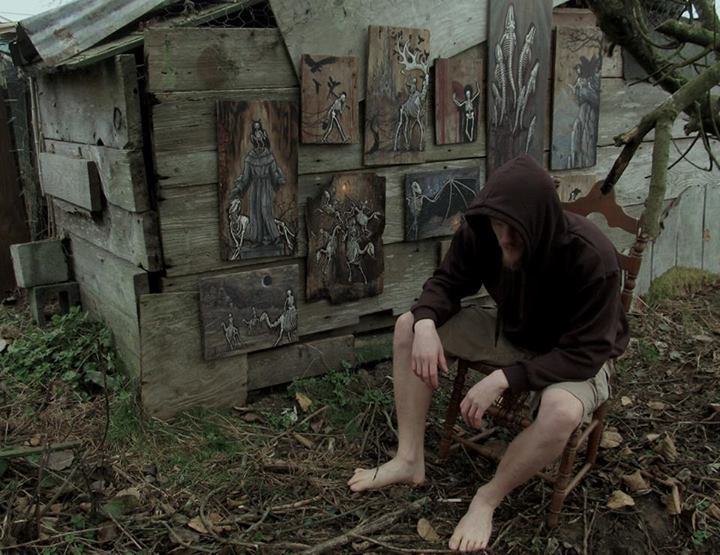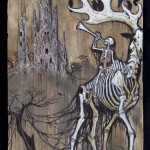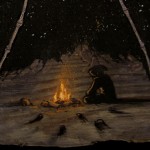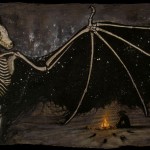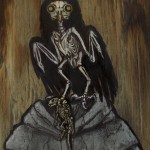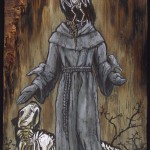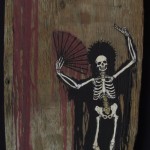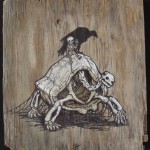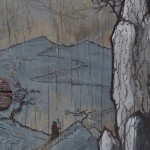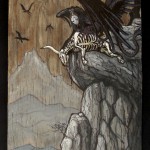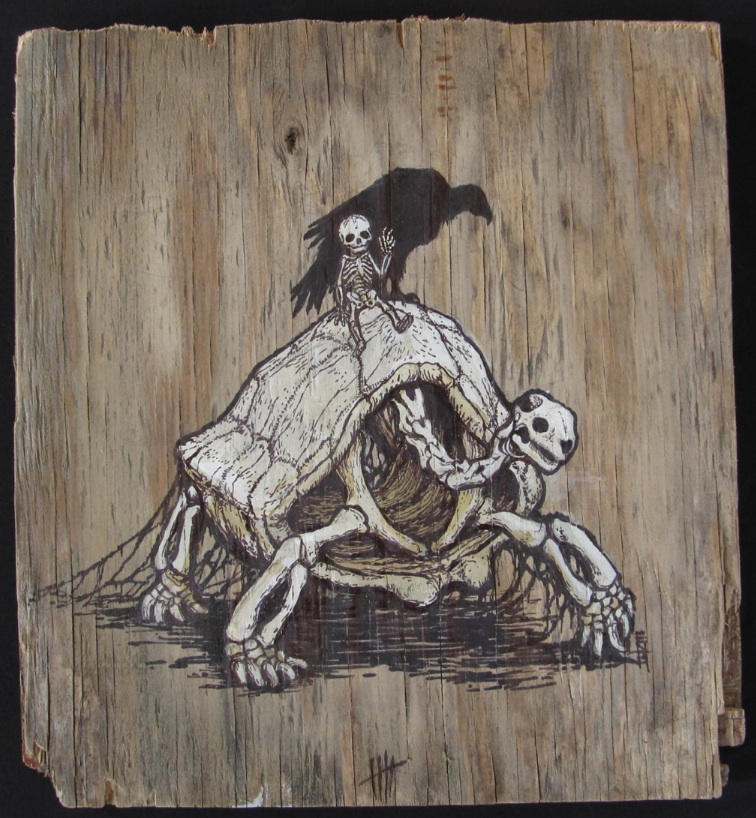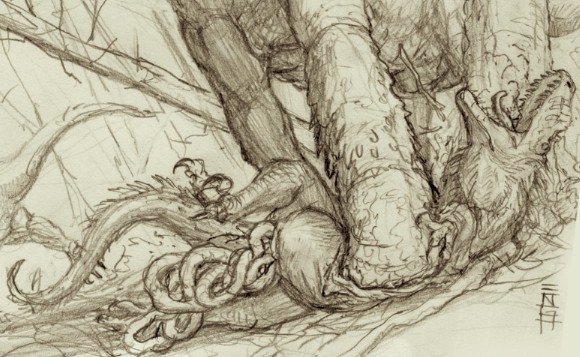STEP 1) IMAGINE THE MONSTERS.
The “Shellback” beast that will be featured in the upcoming Earth Beasts Awaken music videos originally started as a creature I came up with for one of the hand painted CDs I sold to help fund the project (which was derived in part from this earlier Earth Beast artwork for the initial album release).

Shellback Earth Beast Design Progression
As you can see, in the process of adapting that original idea into a costume design a few things change, and in adapting that costume design into the physical pieces that will be worn by the performer, things chance a bit more. I’ve found that the best end result is achieved when I can strike a balance between making the best physical shapes and textures with the available materials and maintaining the overall “concept” or “soul” of the character. I used to think it was kinda weak that my original concepts don’t look exactly like the finished sculpture or puppet, but lately I’ve been thinking it’s really important to let a character design evolve as you actualize that character, because then the natural aesthetic and structural strengths of the medium or materials you’re working with can add to your original design and ultimately make it into a way better design (both functionally and aesthetically).
STEP 2) BUILD THE MONSTERS OUT OF ACTUAL REAL STUFF.

Finskull Earth Beast Fabrication Progression
One of the primary reasons I prefer to root my work in physical mediums as opposed to strictly digital is that the paper and ink, paint and clay all contribute something to the thing you’re making and (if used well) can actually make it much better in ways that no human artist would have ever thought of from the start. There is vast intricate genius in the fabric of every physical substance and no human could possibly think of all the little details and expressive qualities these materials naturally contain or produce. A paintbrush laden with water color, or a groggy clay, or sawdust sprinkled on a mess of paint and glue are all such immensely complex physical phenomenon that we artists should be humbled by them, and grateful for their contributions to our work.
STEP 3) TRY TO FIGURE OUT WHAT WENT WRONG AND TRY AGAIN. FIGURE IT OUT. REPEAT. AGAIN. REPEAT.
While this approach may require surrendering yourself and your vision to the limitations of physical materials the payoff is twofold: the final object being created is potentially richer in detail and life than you could’ve ever conceived in a sterile digital workspace, and the discipline learned from working with physical media can help develop your ability to creatively flow in concert with forces outside yourself, which for me has improved my life in general. I’d be willing to go so far as to say that an artist with total control of their medium, social circumstances and surroundings is neither learning anything from the world they are working in, nor has any reason to be an artist.
STEP 4) SLEEP.

